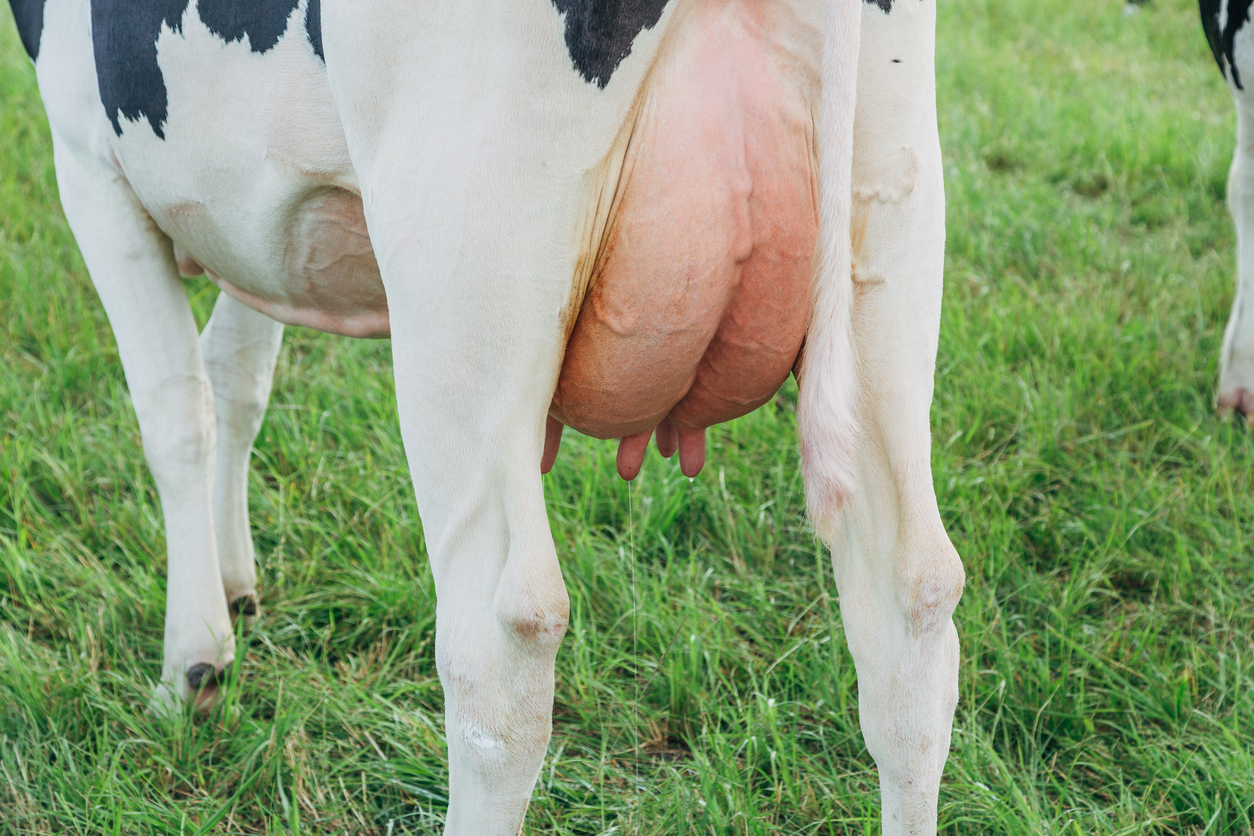Spring is a high-risk period for mastitis in dairy cows, with its specific combination of environmental, physiological, and management factors creating the ideal conditions for infection. Farm teams can minimize the risks and impact of mastitis in the herd with a comprehensive prevention, detection, diagnostic, and management plan.
What makes spring a high-risk time for mastitis in dairy cows?
Calving: Fresh cows are immunosuppressed around calving, making them more susceptible to mastitis-causing bacteria.
Routine changes: Spring often involves rapid shifts in diet, milking routines, and herd movements, adding stress and affecting immunity.
Warm and wet conditions: Spring brings warmer temperatures and wetter ground, creating the ideal conditions for environmental bacteria.
Milking risks: Contagious bacteria can spread through the herd via contaminated milking equipment.
Teat ends more open: After calving and early milking, teat ends may be more dilated and less keratinised, making them easier for bacteria to enter.
Dry-off issues: If dry-off management wasn't effective, latent infections can flare up.
What can you do to minimize the mastitis risk in fresh cows in Spring?
Prevent bacteria getting into teats:
Keep stalls, yards, tracks and other areas cows congregate clean and dry.
Wear gloves when milking, and change them when they get dirty.
Clip tails if needed so they are not hanging around the udders.
Gently clean and dry teats before milking.
Pay attention to good practice in attaching and removing milking cups, avoiding force that could damage teat ends.
Apply a good teat-spray after milking, ensuring full coverage
Detection and diagnostics for clinical mastitis:
Check udders and teats regularly, to detect clinical mastitis cases.
Test all suspected clinical mastitis cases with Mastatest, to identify the bacteria, and the optimal antibiotic to use where necessary for that bacterial type.
Milk cows with clinical mastitis last, to prevent cross-contamination in the herd. Clean all equipment thoroughly afterward.
Proactively manage sub-clinical mastitis:
Identify potential sub-clinical mastitis cases by SCC results from herd tests, monitoring milk volumes and utilizing in-line detectors if you have them.
Test potential sub-clinical cases (e.g. SCC >150,000), to detect any that might be contagious (e.g. Staph. aureus) and require active management.
Review and Plan:
Review your Mastatest mastitis case data regularly, especially early in Spring when mastitis cases are peaking. Look for patterns in case numbers, cows with repeat issues, and the bacterial types (environmental vs contagious, and causing you particular issues.
Mastatest users can use the bespoke reports and analysis tools available in the Mastatest system client portal.
Develop your bespoke farm mastitis management plans, utilizing the expertise of your veterinarian and farm advisors. It's never too early, or too late in the season to be making a plan!


